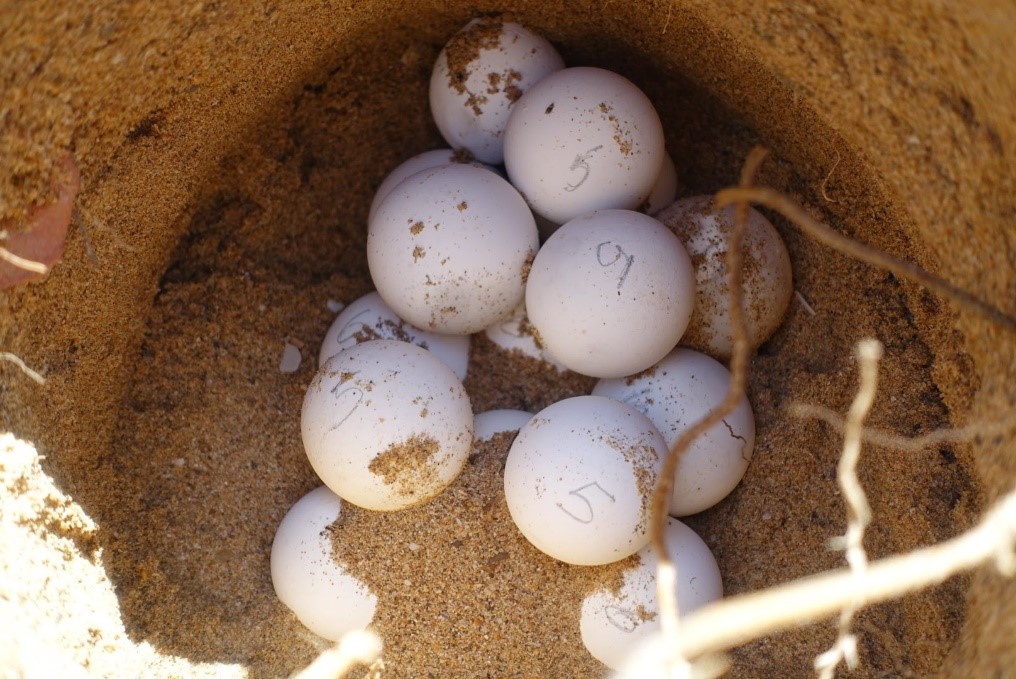Where are The Hatchery turtles now?
You’re probably wondering what happened to the Loggerhead Turtle eggs that were incubating at the Queensland Museum for this year’s World Science Festival Brisbane? Queensland Museum’s Senior Reptile Curator Patrick Couper has an update about the turtles that were due to hatch at World Science Festival Brisbane this year…
The turtle eggs for this year’s Hatchery were collected from Mon Repos in late January and incubated on-site for three weeks before being transported to Brisbane. Following the decision to cancel the 2020 World Science Festival Brisbane, they were returned to Mon Repos and buried in four shallow `nests’ in the dunes above the high tide mark. The eggs in two of these nests hatched on the 22nd or 23rd of March and the hatchlings were observed working their way to the surface on the 24th of March. At this time, the eggs in the other nests were just beginning to hatch. When the hatchlings leave their nests, they will scurry down the beach to enter the surf and then swim ~80 kilometres offshore into the Eastern Australian Current. They then ride this current past the northern tip of New Zealand and on to the coasts of Chile and Peru. They will not return to Queensland waters for 16 years and are not ready to breed until they are around 30 years old.
LOGGERHEAD TURTLE
Caretta caretta
Loggerhead Turtles are found throughout the world’s tropical and subtropical waters.
Mon Repos, near Bundaberg, is the best-known and most widely visited turtle rookery in Queensland.
Loggerhead Turtles nest at Mon Repos from late October to March, with hatchlings emerging from late December onwards.
Female Loggerheads can lay as many as six clutches of ping-pong ball sized eggs in a single breeding season. Each clutch contains around 128 eggs and the turtles usually breed every three to four years.
They feed on shellfish, crabs, sea urchins and jellyfish and are equipped with powerful jaws that enable them to crush hard-shelled prey.
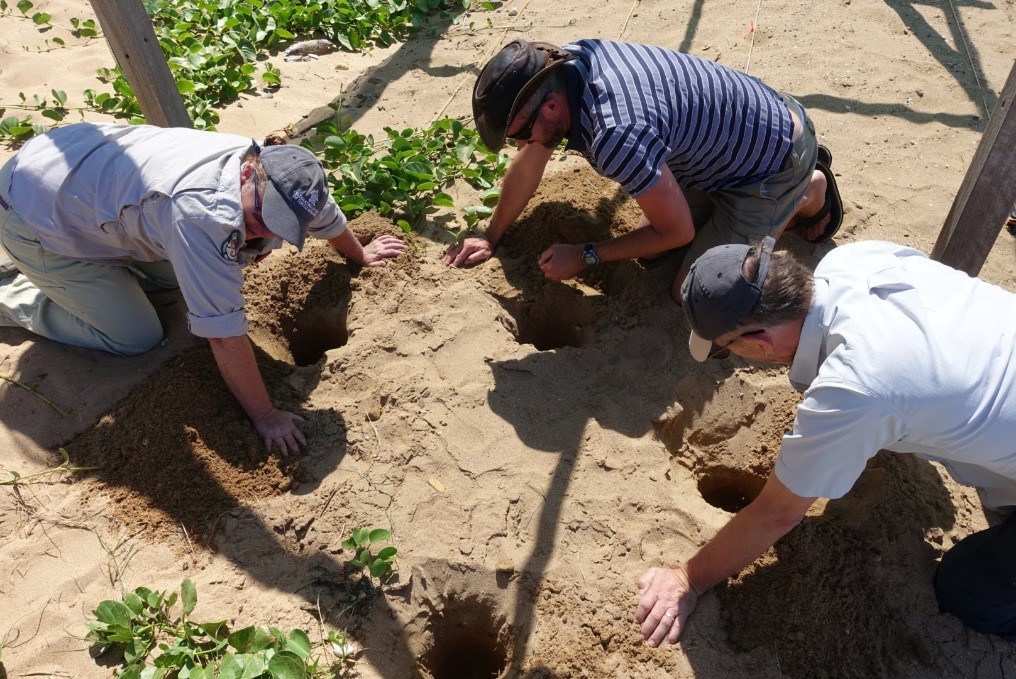
Patrick Couper and Andrew Amey from the Queensland Museum assisting Janine Ferguson (Senior Technical Officer- Department of Environment & Science) to bury the 2020 Hatchery eggs in the dunes at Mon Repos Beach. (Image: Eamon Amsters, Queensland Museum)
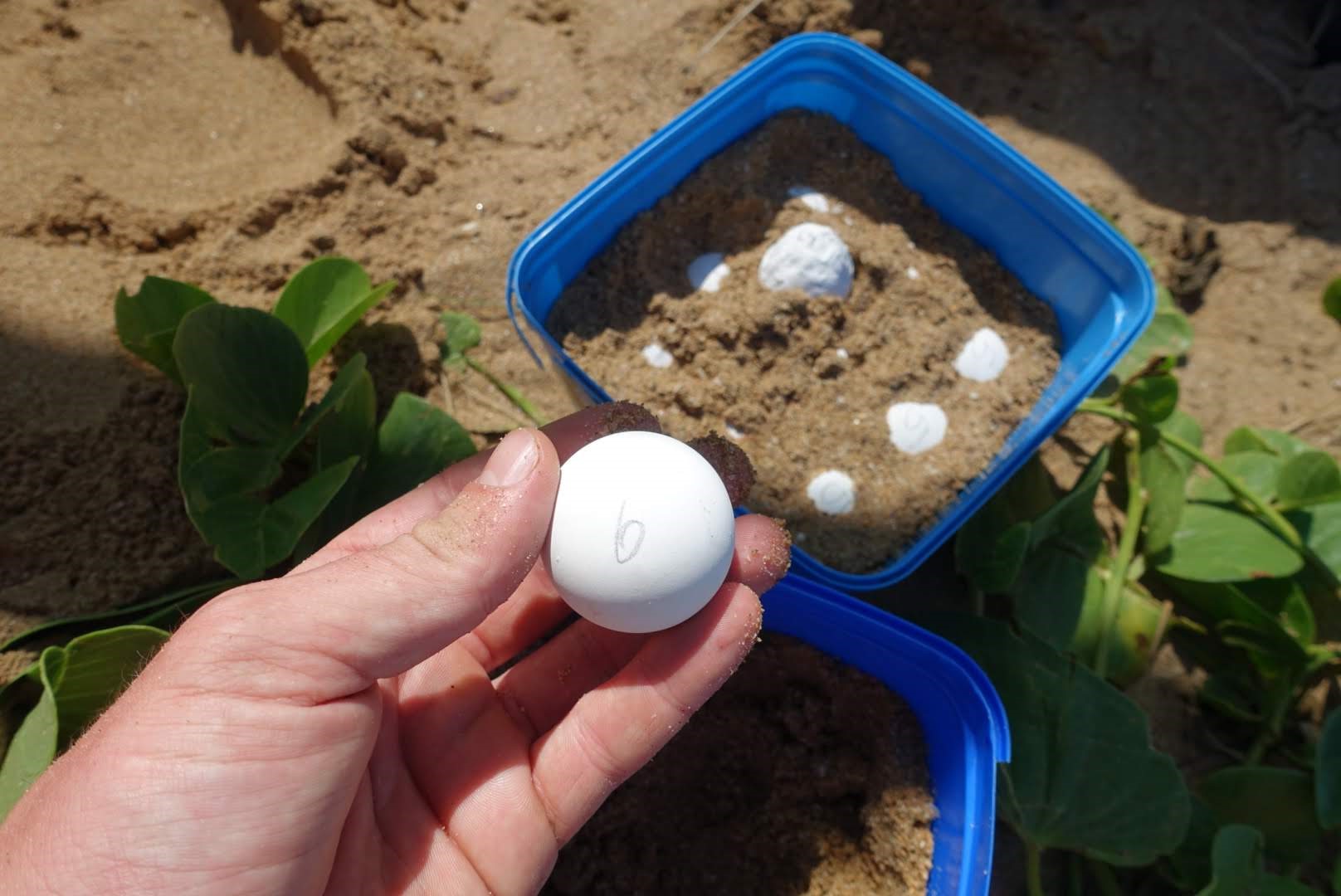
The eggs numbered and ready for burying. The egg in the top of the back container has failed to develop a full-term embyro. This is not usual, an 80% hatching success rate is regarded as good in a natural nest. The Hatchery at the World Science Festival Brisbane has averaged an 84% hatching success over the past four events. It achieved an 88% hatching success in 2016. (Image: Eamon Amsters, Queensland Museum)
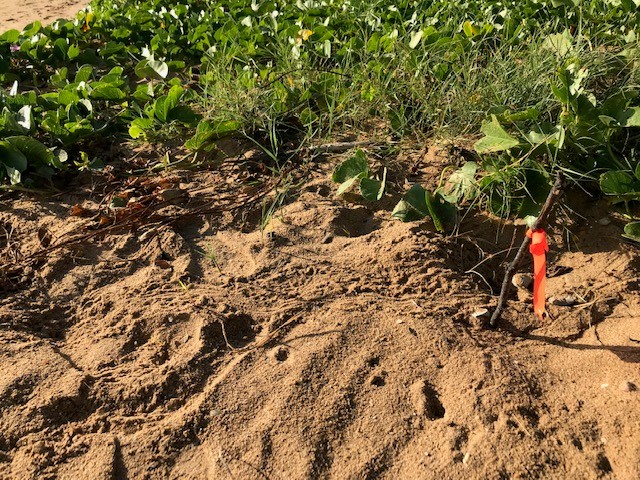
27th/28th March: Our turtles have hatched! Hatchling tracks leading away from a nest that contained turtle eggs for the World Science Festival Brisbane 2020. (Image: Janine Ferguson, Department of Environment & Science).
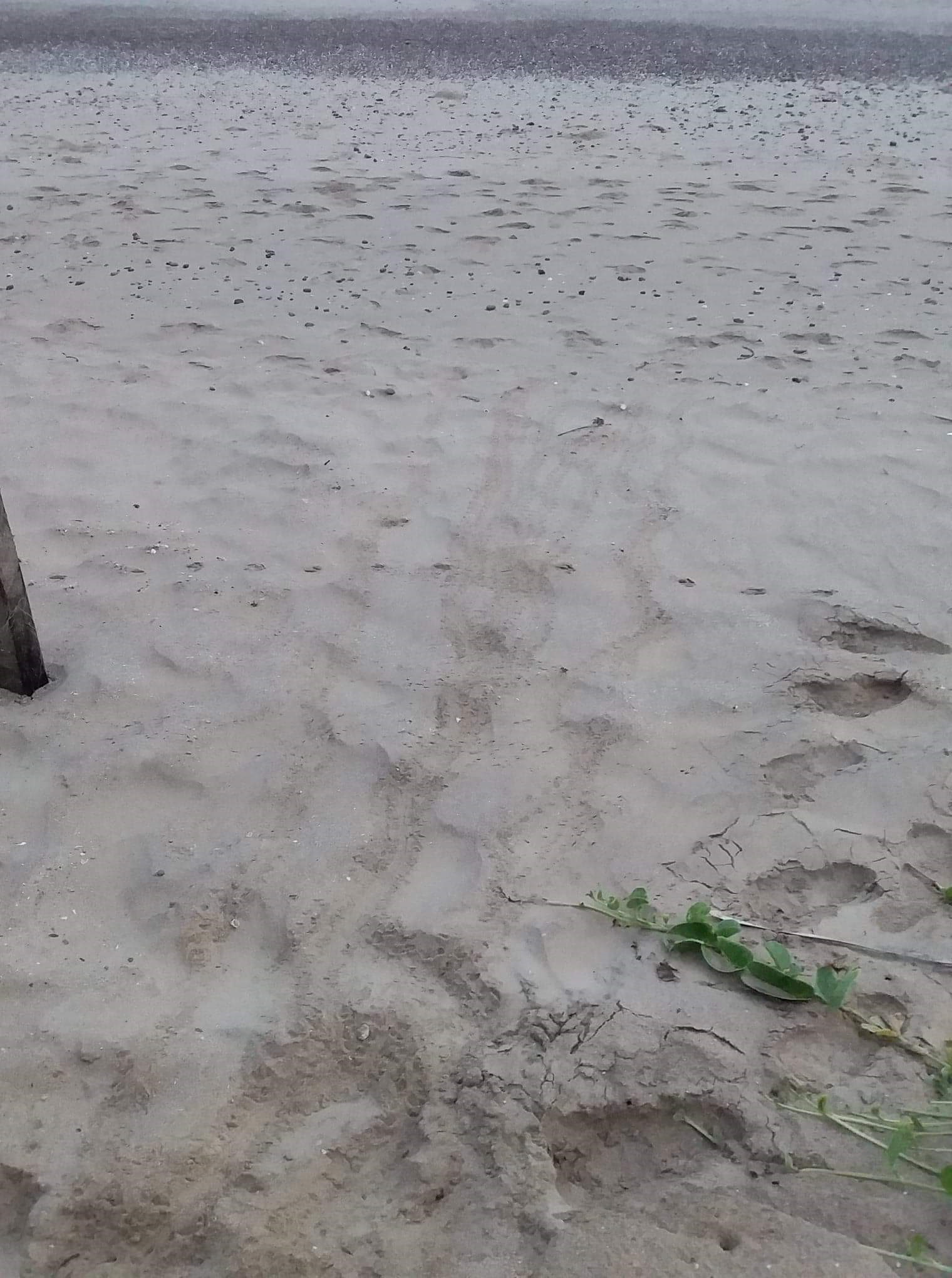
Tracks showing our turtle hatchlings crossing Mon Repos Beach. These hatchlings are now at sea and will soon be riding the Eastern Australian Current. (image: Joanne Holmes).
Threats to survival
Marine turtles are threatened on many fronts. Some of these threats include:
Fishing: Longline fisheries have been implicated in turtle deaths in the open ocean. Turtles also drown when they are entangled in the float lines of crab pots, and abandoned nets (ghost nets). Between 1977 and 1992 there was a 50 – 80% loss of nesting Loggerhead Turtles in Queensland, but changes in the fishing industry helped to reverse this trend.
Coastal development and habitat disturbance: Artificial lighting can deter nesting turtles and disorient hatchlings, causing them to move towards the bright lights and away from the sea. Uncontrolled vehicle access to beaches causes erosion, damages nests and disturbs nesting females.
Feral predators: Turtle eggs and hatchlings are eaten by introduced predators such as pigs, dogs and foxes.
Pollution: Agricultural and industrial pollutants impact important turtle habitats, especially coral reefs. Discarded rubbish is consumed by turtles, clogging their digestive tracts and causing death from starvation. Young turtles feed near the surface and can swallow plastic rubbish. Small fragments of hard plastic are particularly hazardous to small turtles. A recent study found plastic in the digestive tracts of all turtles examined.
Boat Strike: Turtles die from collisions with boats and are frequently found with propeller damage to their carapaces (shells).
Climate change: Rising sea levels and an increase in the frequency and intensity of cyclonic events will erode beach profiles, damaging nesting habitat.
Marine turtles require nest temperatures between 25° C and 33° C for successful embryonic development (the World Science Festival Brisbane turtles are incubated at 29.9°C). The lower temperatures in this range produce male hatchlings. A warmer world, with hotter summers and higher nest temperatures is likely to skew the sex ratio, increasing the output of female hatchlings from many nesting beaches. This has already happened at nesting beaches in Queensland. Higher temperatures can also increase hatchling mortality within the nest.
How does the turtle population benefit from this project?
Loggerhead Turtles are ranked as a conservation priority. The World Science Festival Brisbane’s Hatchery aims to:
- Raise awareness of the threatening processes impacting the survival of this species.
- Highlight ways that individuals can assist in the preservation of turtle habitats in South East Queensland.
- Highlight Mon Repos as ‘must see’ tourist destination.
This project is overseen by Dr Colin Limpus and Patrick Couper. Dr Limpus coordinates the Queensland Turtle Research Program for the Department of Environment and Science. Patrick is Queensland Museum’s Senior Reptile Curator. This project is conducted with appropriate permits from the Department of Environment and Science and with approval from an Animal Ethics Committee.
How can you help?
- Reduce your energy use.
- Keep the environment clean by disposing of your waste thoughtfully and participating in organised clean-up events.
- Choose reusable bags, water bottles, straws and keep cups.
- Repair before buying new.
- Choose products with minimal packaging.
- Recycle and buy recycled products.
- Compost appropriate kitchen and garden waste and non-recyclable paper and cardboard.
- Join a local turtle-monitoring group. For more information contact [email protected]
- Report sightings of all sick, injured or dead marine turtles to the RSPCA on: 1300 ANIMAL (1300 264 625) at any time.


